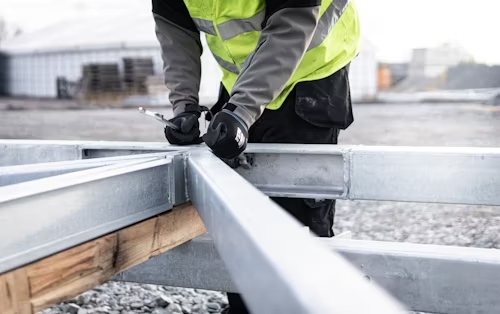Safety Standard Compliant Apparel for Industrial Employees
6 Mins Read
2 comments
Published on: 30 March 2024
Last Updated on: 10 September 2024

toc impalement
Ensuring proper protective equipment for team members in the industrial sector is essential for maintaining workplace safety and minimizing productivity losses caused by worker illness or injuries on the job site. Let’s Understand Safety Standard Compliant Apparel for Industrial Employees.
Failing to provide adequate personal protective equipment, like MWG Apparel, exposes employers to risks such as employee injuries and potential fines. Protective clothing in industrial settings is subject to various standards, encompassing chemical protection, hot work safety, and other hazards.
This article will outline a few crucial pieces of health and safety clothing apparel for industrial workers that facilitate smooth operation.
What Is Industrial Safety?
Industrial safety is one major concept that directly links employees’ safety and security from industrial hazards. Chemical and physical situations may result in workplace injuries. Some hazards can result in life-related dangers and threats. Industrial accidents can result in minor to major injuries in the workplace. Moreover, it can result in the form of death while working in the workplace.
However, today, employees within organizations can use safety-related norms and protocols to minimize the threats that may result in ignorance, lack of concentration, and minor mistakes.
The stakeholders of the industrial sectors understand the value of safety and security internal to the workplace and therefore, they prepare policies and structures that can save employees from any major mishaps that may directly affect an individual’s life.
Why Safety Is A Must For Industrial Employees?
The industrial sector employees are vulnerable. This is why the management makes efforts in their end to reduce the risks of accidents. However, in this section, let’s try to understand the value of workplace safety so that it helps the employees to chalk out policies.
Aware Of The Surrounding
There are many employees who do not feel the urge and drive from within to keep adequate protection regarding themselves. Consequently, these employees, regardless of how skillful or diligent they are, can come under the whirlwind of threats. This is where there is a need for the management to frame policies on safety and security. It is one of the prime requisites to working in the industrial sector.
Management helps with major training so that the employees build awareness regarding the need for training within the employment circle.
Reduction Of Workplace Safety
It is observed from different studies that most of the employees working in the manufacturing sector are physically not fit and healthy enough. They do not feel they lack of time to look after their own health. Moreover, working for long hours, pressure, and conflicts with co-workers may increase stress.
Under such circumstances and in such a state of mental health, the employees may make some major errors. Ultimately, it can affect an individual’s overall health. Moreover, working with a disturbed state of mind can lead to causing accidents.
As an employee, you need to take care of the issues and ensure that you are aware of the short-term and long-term risks and uncertainty. For safety concerns, you could schedule your work and thereafter manage things so that it reduces workplace stress.
Using The Tools Appropriately
You must take adequate safety precautions while using a machine or other tools. Taking shortcuts is one of the biggest safety risks. Furtheroer, abstain from taking shortcuts to attaining the goals because it is the area where there is minimum risks and uncertainty.
So, you are recommended to use the correct tools to help you reduce workplace injuries. This is why employees must use the correct tools and comply with safety protocols to avoid personal safety dangers.
Top 7 Safety Standard-Compliant Clothing Apparel
According to the Safety and Health Administration, employers must furnish required personal protective equipment in alignment with state and national regulations.
The process entails conducting hazard assessments, identifying suitable protective clothing apparel like MWG Apparel, training employees in its proper usage, and regularly inspecting and replacing damaged equipment.
Presented below are the top items on the personal protective equipment list commonly utilized for industrial workers:
1. Hard Hats
Widely recognized as a fundamental element of industrial safety worldwide, hard hats shield workers from potential head injuries in various workplaces. They stand as a pivotal component of industrial safety gear.
International safety standards mandate hard hats for those involved in construction and demolition. Different classes of hard hats provide varying levels of protection, making them indispensable assets in health and safety equipment.
2. Protective Jackets
Complete body protection holds equal importance in industrial safety, given the necessity for full-body safety products in many industrial settings.
Whether it involves exposure to paints, chemicals, or high temperatures, comprehensive protection for the entire body is crucial safety gear across various industries. In occupations such as welding and steel production, where exposure to extreme heat, flames, sparks, and debris is frequent, full-body protection is essential to prevent burns and ensure fire and flame resistance.
This protection typically comes in full-body suits that prevent particle leakage and withstand tears and abrasions.
3. Face shields
They comprise a visor, a lightweight frame made of plastic or metal, and a suspension system that secures the shield to the wearer’s head.
Offering complete face protection, this personal protective equipment (PPE) is worn over masks or goggles to shield against inhaling toxic or hazardous substances.
Refer to government resource lists to locate reputable manufacturers, verify supplier certifications, prioritize examining product samples for authenticity and quality, and thoroughly review contracts.
4. Eye Protection Cover
Every day, thousands of American workers experience job-related eye injuries, leading to hundreds of cases where individuals miss work for at least one day due to the injury.
Ensuring adequate eye protection through safety glasses, goggles, and face shields is vital in industrial safety. Compliance with general industry standards by providing proper eye protection is the most straightforward method to prevent worker injuries and minimize lost production resulting from eye injuries.
5. Respirators
It’s a category of respiratory protective gear integral in manufacturing environments to safeguard workers from inhaling air tainted by hazardous dust, fumes, gasses, or sprays. Effective respirators must snugly fit the face, covering the nose and mouth.
Reputed suppliers like MWG Apparel must procure these apparel. N95 filtering facepiece respirators are widely utilized and endorsed. In instances where they are not accessible, workers can use powered air-purifying respirators (PAPRs or high-efficiency particulate arrestance filters (HEPA).
6. Ear Protection Gear
Ear protection, including noise-reducing earmuffs and earplugs, is indispensable industrial safety equipment for averting noise-induced hearing impairment. Approximately half of all manufacturing personnel have encountered hazardous noise, leading to around 20% of manufacturing workers experiencing hearing difficulties.
7. Hand Protection
Gloves, finger guards, and arm coverings shield workers against skin injuries from cuts, chemical and thermal burns, and punctures.
The level of thermal protection and grip suitability offered by hand and arm protection varies based on the nature of the job and exposure risk. Gloves can be crafted from leather, canvas, metal mesh, fabric, or substances resistant to chemicals and liquids.
Conclusion
In industrial environments, prioritizing safety is paramount. Employers are responsible for furnishing workers with essential personal protective equipment to avert accidents, injuries, and potential fatalities. Above are several indispensable pieces of PPE equipment that every worksite should possess.
Employers must verify that all clothing apparel comply with the American National Standards Institute (ANSI) standard, which sets forth minimum performance and testing requirements for protective helmets.
Additionally, employers must provide workers with quality safety apparel manufactured by certified suppliers like MWG Apparel.
Read More:


















2 comments
Rupert Ritchie March 30, 2024 at 3:38 pm
Hello Neat post Theres an issue together with your site in internet explorer would check this IE still is the marketplace chief and a large element of other folks will leave out your magnificent writing due to this problem
Elinore Christiansen March 31, 2024 at 4:18 am
Somebody essentially lend a hand to make significantly articles Id state That is the very first time I frequented your website page and up to now I surprised with the research you made to make this actual submit amazing Wonderful task